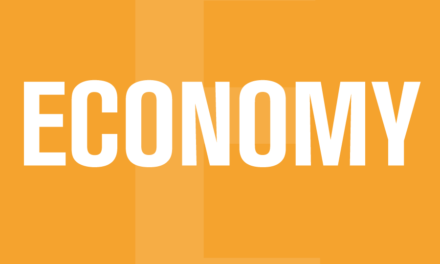Anyone following the news over the last several months will already have noticed this – discourse about Canada’s economic response to the Trump crisis has been dominated by a small number of voices espousing a narrow range of views.
As Jim Stanford points out in this essay for the Canadian Centre for Policy Alternatives (CCPA), “public discussion about Canada’s economic strategy under Trump has been unduly influenced by loud and well-funded business voices advancing long-standing corporate demands: to cut corporate taxes, to weaken or eliminate environmental regulations, to downsize the public sector, and to build more export pipelines for oil and natural gas.”
In an effort to expand the discussion, the CCPA and the Center for Future Work (where Jim Stanford is Director) are putting together an “Elbows Up Economic Summit” in September to forge a strategy “that prioritizes human and environmental needs.” As elements for such a strategy, Stanford identifies 15 different risks, constraints and priorities which negotiators need to address. These include non-controversial ideas like diversifying exports, increasing capital spending on machinery and equipment and building more housing.
But as would be expected there are a number of differences between Stanford’s priorities and those of the business voices, notably on pipelines and tax cuts. And perhaps the most significant divergence concerns the importance to be attached to a renewed trade deal with the U.S. that continues the continental economic integration that has been in existence since 1989.
Media coverage seems to assume that a continuation of the pre-Trump 2.0 trade arrangements is the prime goal in negotiations, even if it means backing down on things like the Digital Services Tax or retaliatory tariffs. And that is certainly the position of Canada’s business establishment, personified through Goldy Hyder, head of the Business Council on National Issues.
In an op-ed piece in the Globe and Mail Hyder makes clear that he views as the big prize a continuation of what he respectfully refers to as the U.S.-Canada-Mexico Agreement (USMCA) – most Canadians who know of its existence call it CUSMA, the Canada-U.S.-Mexico Agreement.
Call it what you will, in Goldy Hyder’s opinion Mark Carney’s “elbows down” move last week, scrapping some retaliatory tariffs on U.S. imports, was welcome evidence that the Liberals want to preserve “the preferential trade and investment relationship that has supercharged our economy for the past 40 years.”
Some history
The relationship Hyder refers to began with the controversial Free Trade Agreement (FTA), ratified in 1989 under Brian Mulroney while Ronald Reagan was U.S. president. The proposed deal dominated the 1988 Canadian federal election campaign, with opposition parties and a large slice of the electorate fearing it would damage our economy and compromise our independence.
Turns out the naysayers were probably right, but the Liberals soon made peace with the idea. The FTA was amended in 1994 when Jean Chretien’s Liberals and the Clinton administration brought Mexico into the fold through the North American Free Trade Agreement (NAFTA). Trump campaigned against NAFTA during his first presidential campaign but settled for some minor changes and the new name – USMCA/CUSMA – in 2018 after Justin Trudeau led frantic efforts to save the main elements of the 1994 NAFTA deal.
What this history tells us is that after the 1988 excitement died down, support for trade deals between Canada and the U.S. has had bipartisan backing for more than three decades. Goldy Hyder’s claim that Canada’s economy has been “supercharged” as a result may be an over-statement, but mainstream opinion seems to support the notion that free trade between Canada and the U.S. has been good for Canada. Jim Stanford questions that assumption, arguing that the FTA and its successors have weakened our economy.
“Canada’s vulnerability to Trump’s policies has been exacerbated by past policies which reinforced a structurally subservient role within the North American economy,” he writes.”They pigeon-holed Canada as a supplier of resources, and a ready market for more advanced U.S.-produced products and services.”
Staples vs. Manufacturing
Stanford argues that after World War Two the Canadian economy was becoming less dependent on the export of unprocessed natural resources, with those primary products accounting for only 25 percent of exports in 1990. The percentage dropped further during the first decade of free trade but now, thanks mainly to the oil sands we are again becoming “hewers of wood and drawers of water,” with staples, led by petroleum and petroleum products, accounting for close to 50 percent of exports.
Most of those petroleum exports go to the U.S., creating for that country something Trump loves to hate, a trade deficit. In 2024 the U.S. trade deficit with Canada was $58 billion, third highest behind China at $291 billion and Mexico, at $183 billion. But that deficit with Canada exists only because petroleum products accounted for net exports to the U.S. worth $136 billion in 2024. Taking oil and gas out of the equation leaves Canada with a trade deficit with the U.S. of $78 billion in other exports, including manufactured goods. The illegal tariffs imposed by Trump will cause that deficit on non-petroleum products to grow.
“It is no coincidence that the most severe U.S. tariffs have been aimed at manufactured products (like autos, steel, and aluminum): this reflects a deliberate strategy to pigeon-hole Canada as a resource supplier within the North American economy,” says Stanford.“Strong industrial policy to support manufacturing must thus be central to Canada’s response to Trump’s trade war.”
(The impact of trade deals on North American manufacturing has been much discussed over the years, but it’s worth noting that according to Statistics Canada data, there were 267,000 fewer manufacturing jobsat the start of 2025 than there were when free trade with the U.S. came into effecting 1989. Back then,16 percent of Canadian jobs were in manufacturing, in 2025 it is less than nine percent).
Productivity and Investment
Proponents also claimed that free trade would help to boost productivity, leading to higher wages and rising living standards. They maintained it would eliminate the productivity gap with the U.S. but that hasn’t happened. Instead, the gap has become worse, going from 10 percent to 30 percent below the U.S. rate of productivity, meaning growing disparity between the two countries in average incomes. Stanford says the increased productivity gap is because “the decline of higher-tech industries under free trade, years of fiscal austerity, and renewed resource-dependence all suppressed Canadian productivity progress.”
Free trade was also supposed to lead to increased foreign investment in Canada. It did for a time, but most of that was in the form of takeovers of Canadian firms, mostly by U.S. corporations. And since 2015, Stanford points out that Canadians have invested more in the U.S. and other countries than foreigners have invested here. The folks who run the Canada Pension plan have been part of the trend, with almost half of the CPP’s assets invested in the U.S.
******
It would be a stretch to claim that free trade is the sole cause of Canada’s economic shortcomings. And there’s no way of knowing whether things could have been just as bad, or even worse without them. However, big business opinion notwithstanding, trade deals with the U.S. have clearly not supercharged the economy. Simply salvaging the existing arrangements – or a watered-down version of them – without making further concessions should only be a start.
In Jim Stanford’s opinion, the fact that policies of the last 40 years have left us open to bullying from the U.S. “means that Canada’s response to Trump, therefore, must take account of that structural vulnerability, and undertake an ambitious and holistic strategy to build a more diversified, self-reliant, and ultimately sovereign economy.”
Hopefully the Elbows Up summit will help to create a strategy and a narrative to challenge those business voices that seem intent on continuing with continental integration while pushing an agenda of resource extraction, tax cuts, austerity and relaxed environmental regulation.
-30-






Most of us voted against a trade deal with the US in 1988 but Mulroney won and it worked for a while. Haven’t checked the stats recently but seem to remember that manufacturing employment has decreased in the US as well as Canada. Which would not be surprising given increased automation and the lower labour costs elsewhere in the global economy. I have vague memories of entering the Canadian economy in the 1960s around the time of the early auto agreement with the US. We could, perhaps, return to some version of that model but elbows-up may not go that far.
A great post clarifying what we are hearing on the daily news on CBC.